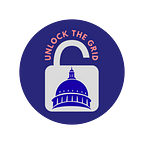Taxing What is Going Up in Smoke (and Into Our Environment)
What is a Carbon Tax?
The carbon tax is defined as “a fee imposed on the burning of carbon-based fuels (coal, oil, gas)” and is used to limit their emissions. The revenue raised from the carbon tax could then be utilized in various ways, such as supporting green policies, funding sustainable projects, or returning it to the people.
Why Are We Talking About It?
With the Biden Administration’s intention of combating climate change, the Administration has tossed around the idea of carbon taxes. Most notably, when asked about the issue during her confirmation hearing, U.S Secretary of the Treasury, Janet Yellen, expressed her support for the idea: “We cannot solve the climate crisis without effective carbon pricing” (Yellen is also involved with the Climate Leadership Council, who advocates for a “carbon fee”).
Why Do People Want to Establish a Carbon Tax?
First, let’s analyze the carbon tax advocates. From a logical standpoint, a carbon tax would likely dissuade consumers from using substances that emit higher amounts of greenhouse gases. As such, the tax would likely encourage companies to use cleaner energy resources and foster innovation. Proponents also argue that a carbon tax is more economical compared to climate regulations. Back in 2019, over 3500 economists and 15 Global 150 companies signed the Baker Schultz Carbon Dividends Plan, which includes a yearly increase in carbon taxes, enforcement of a carbon adjustment system (a system that will tax imports and give rebates on exports depending on an origin/destination country’s carbon pricing/policies) to prevent carbon leakage and keep US businesses competitive, and give carbon tax revenue back to the people (which the plan says will outweigh the price of the carbon tax for ordinary citizens). The International Monetary Fund found that implementing at least a $35 per ton carbon tax will exceed the US’ Paris Climate Pledge. Polling from Yale’s Climate Change Communications program found 67% of registered voters support a carbon tax comparable to the Baker Schultz Plan. What are the negatives then?
Why Don’t People Want to Establish a Carbon Tax?
Opponents of the carbon tax believe that implementing a carbon tax will result in distortionary effects that will slow GDP growth and have a negative impact on the economic market. Other common arguments, often cited by lawmakers, include claims that a carbon tax would severely hit low-income Americans, who spend a more significant proportion of their budgets on transportation, or that a carbon tax still wouldn’t curb emissions from countries, such as India and China, that produce larger quantities of carbon. These are in addition to the classic response that climate change doesn’t exist.
Will a Carbon Tax Ever be Implemented?
So will a carbon tax ever be implemented in the United States? Probably not. Many factors signal this conclusion. First, President Biden has claimed that he won’t raise taxes on people making less than 400,000 (and a carbon tax would impact everyone). Second, the plan doesn’t have much support from progressives — who believe that taxes will give the market too much leeway and will negatively affect the impoverished and minorities — or Republicans, who haven’t embraced any plan that would increase the prices of greenhouse gas emitting substances. Finally, while polling has indicated people would support a carbon tax, not a single state has implemented one. In fact, initiatives to establish carbon taxes in the liberal-leaning state of Washington failed twice, once in 2016 and another time in 2018. Additionally, carbon taxes in other countries, such as France, have experienced lots of backlash from the public, and countries such as Australia have even rolled back their carbon taxes. Advocates’ hopes for a US carbon tax might be up in smoke… ironically like the emissions they propose taxing.
